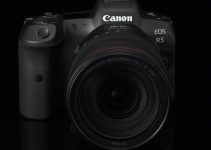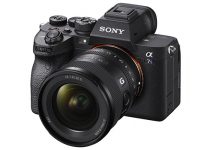One of the hallmark features of the Panasonic GH5 is its ability to capture proper 10-bit 4:2:2 footage internally. What’s more, there are two options you can opt for – either LongGOP 150Mbps or ALL-Intra 400Mbps.
Generally, you may assume that because ALL-I records at a higher bit rate, the footage shot utilizing the suggested compression would be better. This option implies an increase in quality, however, leads to file sizes that are 4x larger than files shot using LongGOP.
So, is there a big enough difference in image quality to justify the harder-to-manage files of ALL-I recording? Filmmaker Arber Baqaj attempts to answer the question by comparing some videos taken while using both compression types.
For these tests, Baqaj decided to shoot in V-Log L as it provides the most flexibility in post-production, especially for color grading. In addition, he attempted to use the same camera settings positions to ensure a fair comparison.
As a side note, there’s no predictive pixel data being created when using ALL-Intra compression as every frame retains the full amount of information, resulting in a higher-quality media file, with each frame at a consistent quality. The LongGOP compression, on the other hand, contains all the information only for the first frame (I-frame) and then predicts the rest (B-frame and P-frame).
That being said, after having shot, edited, and analyzed all the footage, it seems that there isn’t any noticeable difference in a real-world situation between shooting with ALL-I and LongGOP. With both types of shots, even when colors were pushed to the extreme in post, the level of sharpness and quality of motion were pretty similar.
Based on this observations, Baqaj finds it rather difficult to justify the increased file sizes from footage shot using ALL-I. That being said, he recommends shooting in LongGOP instead to save on record time, and to avoid overtaxing your computer’s processor when editing GH5 footage.
Of course, there are many folks who believe that the codec has to be pushed much harder to reveal any weaknesses. Probably, on some of those occasions such as shooting fast moving objects or action scenes using the ALL-I compression would make more sense as the ability to capture each frame individually should yield better results. Rather than that, shooting 4:2:2 10-bit LongGOP video should be more than enough 99% of the time.
Which compression type do you use most when shooting with your GH5? Let us know in the comments below.
[source: Arber Baqaj]
Order Links:
Panasonic Lumix DC-GH5 Mirrorless Micro Four Thirds Digital Camera (B&H, Amazon)
Disclaimer: As an Amazon Associate partner and participant in B&H and Adorama Affiliate programmes, we earn a small comission from each purchase made through the affiliate links listed above at no additional cost to you.



